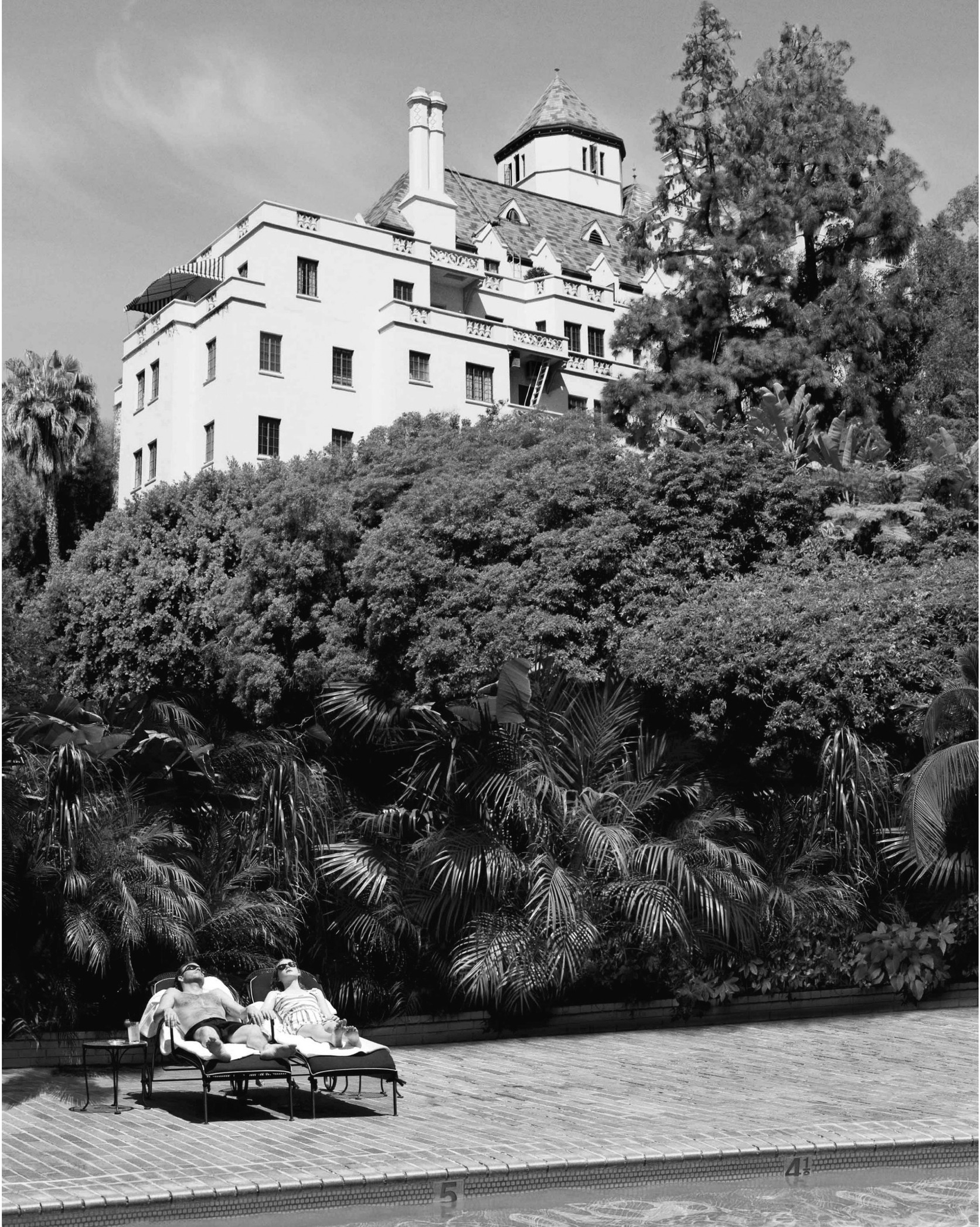Part Six
A GOLDEN AGE (1990–2019)

Hollywood dream, from Somewhere. Photofest
When Ray Sarlot and Karl Kantarjian cashed in on their investment in Chateau Marmont after fifteen years of development, they reckoned they’d done pretty well for themselves and for the hotel. It was dilapidated—hemorrhaging—when they took it over. They stanched the bleeding, modernized much of the infrastructure, added some crucial elements to the layout and design, and generally rescued the place from a decade-plus of neglect.
But they didn’t have the showmanship or savvy to imagine the next phase in the evolution of the property they had saved from ruin, much less to realize it. That set of skills came in the form of a slick East Coaster, a man who, unique among the owners of the Chateau, self-identified as a hotelier, with connections in movies, fashion, publishing, and finance that preceded his arrival at Marmont Lane.
He saw things in the hotel that no one had previously: a golden era that hadn’t really ever existed, even though everyone thought it had; a gem of a building in a prime location (down at the heels at the moment, which made it a bargain); a launching pad for a new era of Hollywood swank and polish; and the keystone jewel of a chain of trendy, luxurious hotels that would sparkle all the more brightly for being siblings to the “legendary” Chateau Marmont.
Never mind that a lot of this was smoke and mirrors. Like a movie producer, he knew that the show itself was often what people wanted to see. As it happened, he added substance: a thorough restoration on top of Sarlot’s work, new amenities to bring the hotel into a new century, and a level of cachet, exclusivity, and sophistication that not even Fred Horowitz had dreamed of. In his hands, for the first time in its six-plus-decade history, Chateau Marmont became famous for—not despite—its physical condition and the things that went on inside its walls. Not even a scandal involving the owner himself could tarnish what the hotel had become.